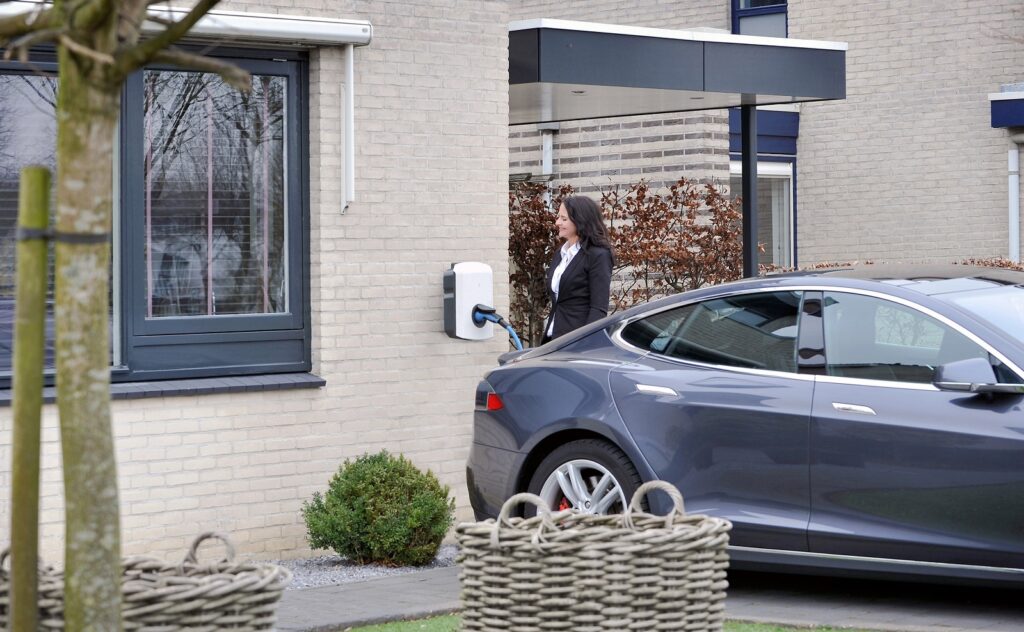Last year saw Alfen record strong electric vehicle (EV) charging growth despite ongoing supply chain pressure, its full year financial results show.
Overall, Alfen’s adjusted EBITDA rose 51% from 2020 to £30.8 million (€36.8 million), with this representing 14.8% of the company’s revenues compared to 12.9% in 2020. The company said the adjusted EBITDA margin improvement is a result of its operational leverage strategy.
For its EV charging arm, revenues hit £87.1 million (€103.8 million), a 94% increase compared to £44.9 million (€53.5 million) in 2020.
This was due to the diverse supply of EVs in the market now, and bolstered by multiple market stimulants supporting the transition to electric driving, including UK regulations that all new buildings will be required to install chargepoints from 2022.
In 2021, Alfen produced around 114,800 charge points, a 107% growth compared to 2020.
The company is expecting its charge point installations as well as its energy storage business to grow over the coming year, helping its overall revenues to from surge from £209.6 million (€249.7 million) – itself a 32% increase on 2020 – to a predicted level of £277-311 million (€330-370 million).
Alfen said it expects to see a further maturation of the energy storage market, which Marco Roeleveld, CEO of Alfen said is showing “strong momentum”.
The company pointed to how the UK government has simplified the planning permission processes for battery storage, reducing lead times from one to two years to a few months as an example.
However, revenues only grew slightly in 2021 for its energy storage systems business line, up 4% to £14.9 million (€17.7 million) in 2021 compared to €17.0 million in 2020.
It follows energy storage faltering in Alfen’s Q3 2021 results, with revenue from the arm more than halving in the quarter as product lead times weighed on sales.
Supply chain challenges partially stemming from COVID-19 still persist, with Alfen expecting supply chain pressures to continue well into 2022 and potentially 2023.
Roeleveld said: “We remain vigilant for new variants that may arise as COVID-19 continued to have some impact on our markets, often indirectly. This materialised predominantly in global supply chain pressure, not only for component sourcing but also for supply logistics.”
To mitigate supply chain challenges, Alfen set up a daily meeting with a team consisting of purchasing, engineering, sales and operations that monitors and engages the supply chain closely. Alfen said this then allows it to take purchasing and logistical decisions quickly to secure supply and deliveries.
Additionally, Alfen increased its engagement with its suppliers, stating that besides its tier 1 suppliers it also engages some of its tier 2 and tier 3 suppliers in order to increase its circle of influence and to secure supplies.
The company also made strategic long-term commitments for batteries and electrical components to further safeguard and enhance resilience in its global supply chain.
For the business as a whole, operational cash flow was £8.8 million (€10.5 million), compared with £16.9 million (€20.1 million) in 2020, with this reduction mainly relating to the increase of Alfen’s stock level.
Capex, meanwhile, was £9.8 million (€11.7 million) compared to £8.1 million (€9.6 million) in 2020, with capex in 2021 including investments in IT infrastructure and security, R&D test facilities and new moulds for smart grids.
Adjusted net profit grew 77% from £10.5 million (€12.5 million) in 2020 to £18.5 million (€22.1 million) in 2021.
“2021 was another strong year for Alfen in which we again delivered profitable growth and closed the year with a strong fourth quarter,” Roeleveld said.
The company’s smart grid solutions business line recorded 2021 revenues of £107.6 million (€128.2 million), a 8% growth compared with £99 million (€118.5 million) in 2020.
Alfen outlined how its markets keep growing, with it becoming “increasingly clear” what the impact on the grid will be as more electricity is produced and consumed, particularly as more renewables are integrated, resulting in more peak loads and volatile load profiles on the grid.





